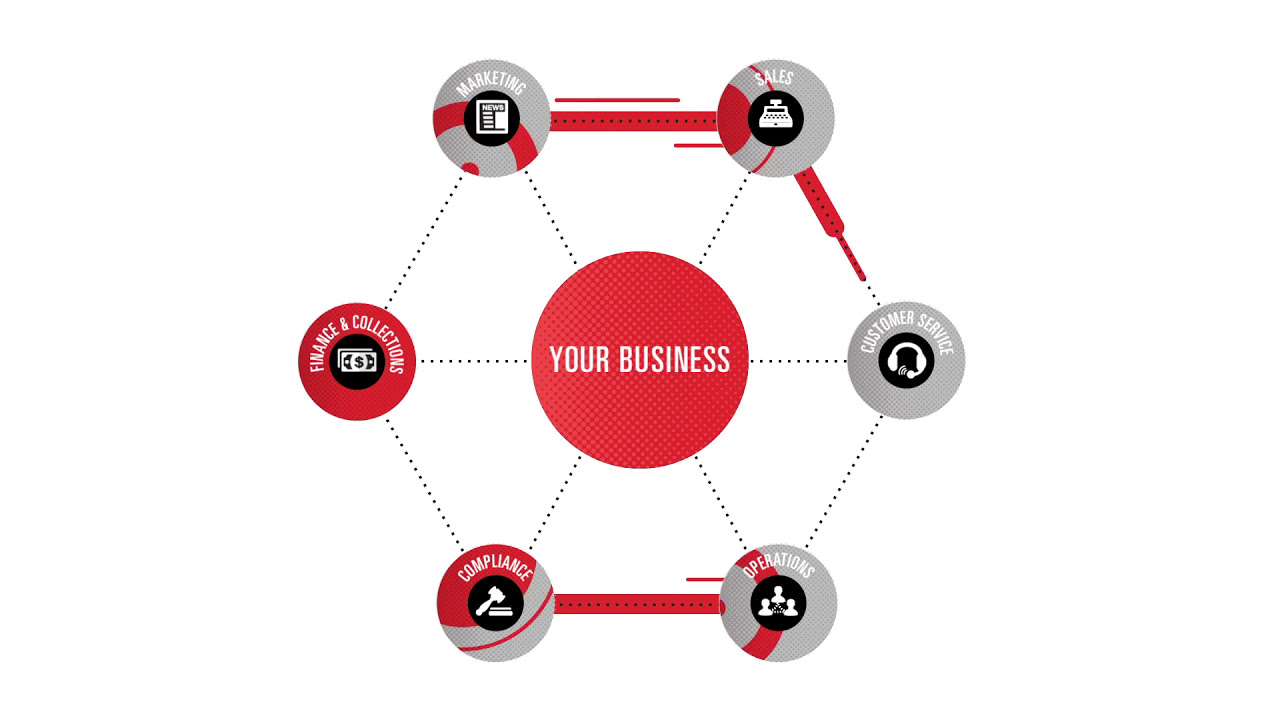
In today’s digital age, data has become a fundamental asset for organizations of all sizes, helping to drive business decisions and improve performance. However, with the increasing volume and complexity of data, managing it effectively has become a significant challenge for many organizations. This is where data management solutions come in, offering a comprehensive set of tools and techniques to manage, organize, store, protect, and analyze data. In this article, we’ll explore the importance of data management solutions, their key features, benefits, and applications, along with some case studies, comparisons, and advice.

Data management solutions play a crucial role in ensuring that an organization’s data is organized, accessible, secure, and compliant. They help to overcome the following challenges:
Many organizations struggle to keep up with the sheer volume of data they generate, such as customer interactions, transactions, social media posts, and IoT sensors. Data management solutions provide tools to consolidate, de-duplicate, and archive data to free up storage space and reduce costs.
Whereas a lot hype has been produced concerning the speedy tempo of enterprise cloud deployments, in actuality we estimate lower than 25 % of enterprise workloads are at the moment being run within the cloud. That doesn’t negate the significance of the expansion of cloud computing – however it does set some parameters round simply how prevalent it at the moment is, and the way troublesome it's to maneuver enterprise workloads to a cloud structure.
Poor data quality can lead to inaccurate analysis, decision-making, and customer service. Data management solutions help to maintain data accuracy, completeness, consistency, and timeliness by enforcing data governance policies and standards, detecting and correcting errors, and ensuring data lineage and traceability.
Data breaches and cyber-attacks are prevalent threats to organizations, especially those handling sensitive information like personal, financial, or health records. Data management solutions offer security features such as encryption, access controls, backups, and disaster recovery plans to minimize risks and comply with regulations.
Organizations often have disparate data sources, formats, and structures, making it challenging to integrate and analyze them. Data management solutions provide integration capabilities, including ETL (Extract, Transform, Load), API (Application Programming Interface), and data virtualization, to create a unified view of the data for analytics and reporting.

Data management solutions typically offer a set of features to manage the entire data lifecycle, from ingestion to archiving. Some of the key features include:
Data governance refers to the policies, processes, standards, and guidelines for managing data assets. Data management solutions provide tools to define, enforce, and monitor data governance policies, including data quality, metadata, privacy, and compliance.
Data modeling is the process of creating a conceptual, logical, and physical representation of the data structure, semantics, and relationships. Data management solutions offer modeling tools to design, validate, and document the data models, including ER (Entity-Relationship), UML (Unified Modeling Language), and XML (Extensible Markup Language).
Data integration involves combining data from various sources into a single, coherent dataset that can be analyzed or used for business purposes. Data management solutions provide tools to integrate data from various sources, including databases, files, APIs, and cloud services, using ETL, ELT (Extract, Load, Transform), or data virtualization techniques.
Data quality refers to the accuracy, completeness, consistency, validity, and timeliness of the data. Data management solutions provide tools to profile, cleanse, standardize, validate, and enrich the data, ensuring that it meets the defined quality standards and business rules.
Data security involves protecting data from unauthorized access, use, disclosure, modification, or destruction, whether intentional or accidental. Data management solutions provide security features, including encryption, access controls, backups, and disaster recovery plans, to ensure that data is secure and compliant with regulations.
Master data management (MDM) is the process of creating and maintaining a single, authoritative source of truth for critical data entities, such as customers, products, or locations. Data management solutions offer MDM capabilities to manage master data across different systems, applications, and channels, ensuring consistency and accuracy.

Data management solutions offer numerous benefits to organizations, including:
By enforcing data governance policies, detecting errors, and validating data quality, data management solutions help to ensure that data is accurate, complete, and consistent, leading to better decision-making, customer service, and operational efficiency.
By automating manual tasks, reducing errors, and freeing up storage space, data management solutions can improve productivity and reduce costs, allowing employees to focus on more valuable activities and strategic initiatives.
By providing security features, auditing trails, and compliance reports, data management solutions help organizations comply with regulations, such as GDPR, CCPA, HIPAA, or PCI DSS, avoiding fines, reputational damage, and legal liabilities.
By integrating data from various sources, creating a single source of truth, and enabling self-service analytics, data management solutions can provide insights into customer behavior patterns, market trends, and operational performance, allowing organizations to make data-driven decisions and gain a competitive advantage.

Here are some examples of how data management solutions have helped organizations to solve their data challenges:
A global retailer was struggling to manage its inventory across multiple warehouses and sales channels, leading to stockouts, overstocking, and lost sales. By implementing a data management solution, the retailer was able to integrate its inventory data from various sources, analyze sales patterns, forecast demand, and optimize replenishment. As a result, the retailer reduced stockouts by 30%, increased inventory turnover by 15%, and improved customer satisfaction.
A healthcare provider was facing challenges in managing patient records across multiple facilities, departments, and systems, leading to errors, delays, and compliance issues. By adopting a data management solution, the provider was able to unify its patient data, enforce data governance policies, and improve data quality. As a result, the provider reduced duplicate records by 50%, improved data accuracy by 20%, and enhanced patient care and outcomes.
A financial institution was concerned about the security of its customer data, especially with the increasing risks of cyber threats and regulatory requirements. By deploying a data management solution, the institution was able to encrypt its sensitive data, implement access controls, perform backups and disaster recovery, and comply with regulations such as PCI DSS and GDPR. As a result, the institution improved its data security posture, avoided data breaches, and enhanced customer trust.
There are several data management solutions available in the market, each with its strengths, weaknesses, and use cases. Here are some comparisons between popular data management solutions:
Relational databases (RDBMS) and NoSQL databases offer different approaches to managing structured and unstructured data, respectively. RDBMS are suited for transactional and analytical workloads that require complex querying, data integrity, and ACID (Atomicity, Consistency, Isolation, Durability) properties, while NoSQL databases are ideal for scalable, distributed, and flexible data models that can handle massive volumes of data, such as social media feeds, sensor data, or log files.
On-premises and cloud-based solutions have different cost models, scalability, security, and maintenance requirements. On-premises solutions offer more control over data privacy, customization, and legacy applications but require higher upfront investments, hardware, and personnel costs. Cloud-based solutions offer more flexibility, agility, and pay-as-you-go pricing but require trust in the cloud provider, connectivity, and compliance with regulations.
Open-source and proprietary solutions offer different levels of support, community, innovation, and licensing models. Open-source solutions offer more transparency, collaboration, and customization but may lack enterprise-grade features, documentation, or warranties. Proprietary solutions offer more stability, functionality, and vendor lock-in but may incur higher licensing fees, upgrades, or integration costs.
Here are some tips for choosing and implementing a data management solution:
Before selecting a data management solution, you should define your data requirements, use cases, stakeholders, goals, budget, and timeline. This will help you identify the necessary features, performance, scalability, security, and integration capabilities.
To ensure that your data management solution meets your quality standards, you should assess your current data quality, including completeness, accuracy, consistency, and timeliness, using profiling tools or data audits.
Data governance is a critical aspect of data management, and you should plan it carefully to ensure compliance, accountability, and transparency. You should define your policies, procedures, roles, and responsibilities, and communicate them to your stakeholders.
Before deploying your data management solution, you should test it thoroughly, including data ingestion, transformation, integration, quality, security, and performance. You should also validate your analytics and reporting outputs to ensure that they meet your business needs.
Once you have deployed your data management solution, you should monitor it continuously to detect any issues, anomalies, or opportunities for improvement. You should also collect feedback from your users, track usage metrics, and measure your ROI to optimize your solution over time.
A1: Data management refers to the process of managing data assets throughout their lifecycle, including ingestion, storage, processing, analysis, sharing, archiving, and disposal.
A2: Data management offers numerous benefits to organizations, including improved data quality, increased productivity, enhanced compliance, and better analytics.
A3: A data management solution is a set of tools and techniques used to manage, organize, store, protect, and analyze data throughout its lifecycle.
A4: Some key features of data management solutions include data governance, data modeling, data integration, data quality, data security, and master data management.
A5: To choose a data management solution, you should define your requirements, assess your data quality, plan your data governance, test your solution, and monitor and improve continuously.
In conclusion, data management solutions are essential for organizations to manage their data effectively, efficiently, and securely. They offer a comprehensive set of tools and techniques to overcome data challenges, including data overload, data quality, data security, and data integration. By adopting a data management solution, organizations can improve their data quality, increase productivity, enhance compliance, and gain better insights into their business performance. However, choosing and implementing a data management solution requires careful planning, testing, and monitoring to ensure success. So, start by defining your requirements, assessing your data quality, planning your data governance, and selecting the right solution that fits your needs and goals.